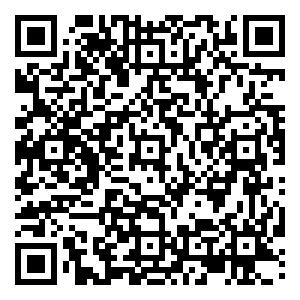STUDY ON BOTTOM LINE OF WATER ENVIRONMENT QUALITY IN TYPICAL CITY IN THE PEARL RIVER DELTA
-
摘要: 三线一单是生态环境保护参与国土空间精细化管理的重要手段,其中水环境质量底线是提升区域水环境管理能力的重要抓手。针对目前水环境质量底线划定技术问题,在有关指南的基础上细化了划定技术方法。以珠三角江门市为研究对象,全市划分为94个水环境控制单元,农业源和生活源是江门市水污染物的主要来源。新会区、开平市和台山市水污染物入河总量超过全市的60%。为实现水质改善要求,全市COD、NH3-N、TP的现状污染负荷到2025年至少需削减14%、15%、29%。建立以优先保护区、重点管控区、一般管控区为主体的水环境分区管控体系,3种类型的分区面积占比依次为9.4%、31.9%、58.7%。探讨了水环境质量底线成果落地应用和后续更新调整的重点,研究成果为珠三角其他城市提供理论参考和实践借鉴。Abstract: Three lines and one list is an important means for ecological and environmental protection to participate in the fine management of land and space, and the bottom line of water environment quality is an important grasp for improving the ability of regional water environment management of China. Aiming at the technical problem of defining the bottom line of water environment quality, the technical method of defining the bottom line was refined on the basis of relevant guidelines. Taking Jiangmen City in the Pearl River Delta as the research object, the city was divided into 94 water environment control units. Agricultural sources and domestic sources were the main sources of water pollutants in Jiangmen City. The total amount of water pollutants entering the river in Xinhui District, Kaiping City and Taishan City exceeded 60% of that in Jiangmen City. In order to meet the water quality improvement requirements, the current pollution load of COD, ammonia nitrogen and TP should be reduced by least 14%, 15% and 29% by 2025. A water environment zoning management and control system was established with priority protection areas, key management and control areas and general management and control areas as the main body. The proportion of the three types of zoning areas was 9.4%, 31.9% and 58.7% respectively. This paper discussed the key points of the implementation, renewal and adjustment of the bottom line of water environment quality. The research results can provide theoretical and practical reference for other cities in the Pearl River Delta.
-
[1] 黄润秋.以生态环境高水平保护推进经济高质量发展[N].经济日报,2020-09-13(1). [2] 李王锋,吕春英,汪自书,等.地级市战略环境评价中"三线一单"理论研究与应用[J].环境影响评价,2018,40(3):14-18. [3] 吕红迪,万军,秦昌波,等."三线一单"划定的基本思路与建议[J].环境影响评价,2018,40(3):1-3. [4] 李天威,李巍,李元实,等.基于战略环境评价的鄂尔多斯"三线一单"编制试点实践[J].环境影响评价,2018,40(3):9-13. [5] 谭娟,杨逢乐,李增加,等.云南省水环境质量底线及管控分区探讨[J].环境影响评价,2021,43(5):27-30. [6] 徐太海,赵志远,袁改霞,等.产业园区水环境质量底线划定技术与案例研究[J].环境科学与管理,2020,45(10):44-48. [7] 张培培,吕红迪,秦昌波,等.水环境质量底线划定关键技术与济南实践[J].环境影响评价,2018,40(3):19-22. [8] 张培培,秦昌波,秦莹,等.水环境质量底线编制实践与思考:以南宁市为例[J].环境污染与防治,2020,42(12):1536-1541. [9] 陈大扬,张娜,陈科.基于控制单元划分的南海区广佛跨界水环境治理工程效果评估[J].环境工程,2020,38(3):105-109. [10] 陈金毅,李念,李宛怡,等.水环境容量核算在城市发展模式比选中的应用[J].环境科学与技术,2011,34(8):147-149,163. [11] 董飞,刘晓波,彭文启,等.地表水水环境容量计算方法回顾与展望[J].水科学进展,2014,25(3):451-463. [12] 黄润秋.建设人与自然和谐共生的美丽中国[J].求是,2021(13):64-68. [13] 高吉喜,李广宇,张怡,等."十四五"生态环境保护目标、任务与实现路径分析[J].环境保护,2021,49(2):45-51. [14] 崔嵩,贾朝阳,付强,等.河流动态水环境容量核算与影响因素分析[J].东北农业大学学报,2022,53(1):66-76. [15] 项颂,庞燕,胡小贞,等.基于控制断面水质达标的河流水环境容量案例分析:以银川市灵武东沟为例[J].环境工程,2019,37(10):29-34. [16] 钟鸣,周刚,高运法,等.基于不确定性方法的河流水环境容量计算[J].人民长江,2020,51(3):31-36. [17] 杨杨.我国沿海城市近岸海域环境污染的时空动态演变格局研究[J].中国海洋大学学报(社会科学版),2018(3):51-57. [18] 殷丽娟,许罕多.中国海洋生态损害补偿研究进展与评述[J].海洋经济,2021,11(4):1-10. [19] 戈华清,蓝楠.我国海洋陆源污染的产生原因与防治模式[J].中国软科学,2014(2):22-31. [20] 尹建军.建设陆海统筹保护发展实践区[N].中国自然资源报,2021-08-05(5). [21] 许乃中,张玉环,石海佳,等.珠三角地区战略环境评价研究[J].环境影响评价,2018,40(6):25-29. -

 点击查看大图
点击查看大图
计量
- 文章访问数: 269
- HTML全文浏览量: 49
- PDF下载量: 3
- 被引次数: 0

 登录
登录 注册
注册 E-alert
E-alert

 登录
登录 注册
注册 E-alert
E-alert

 下载:
下载:
